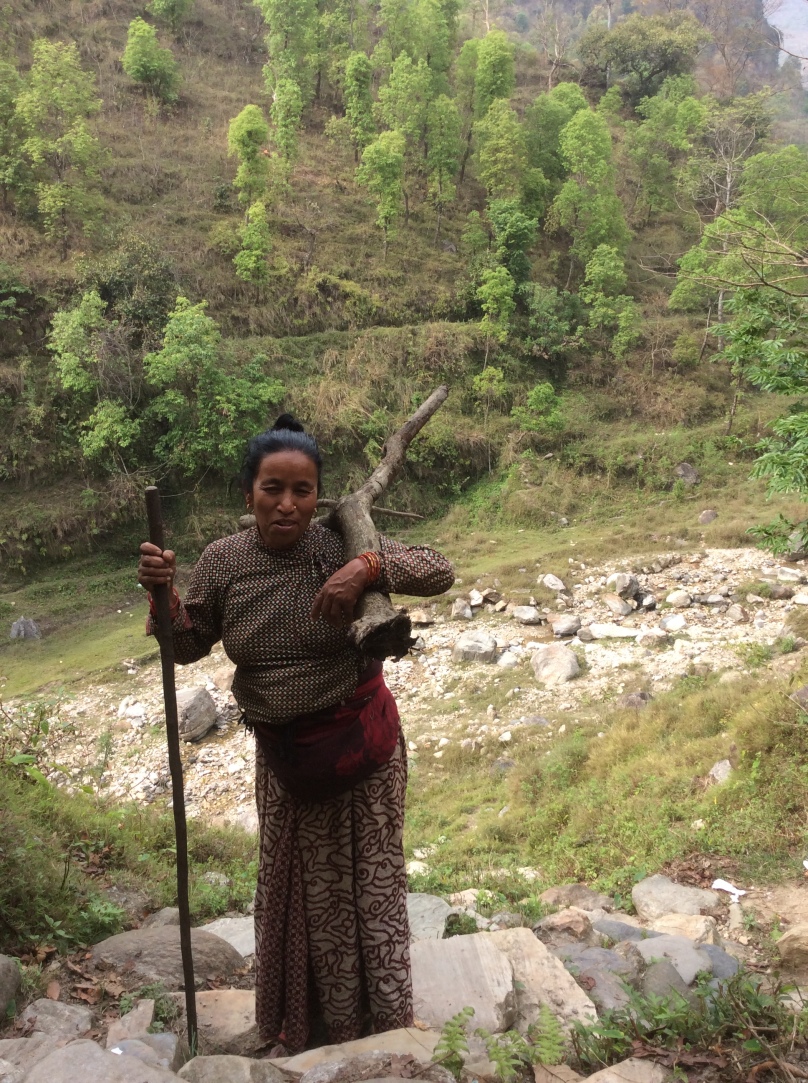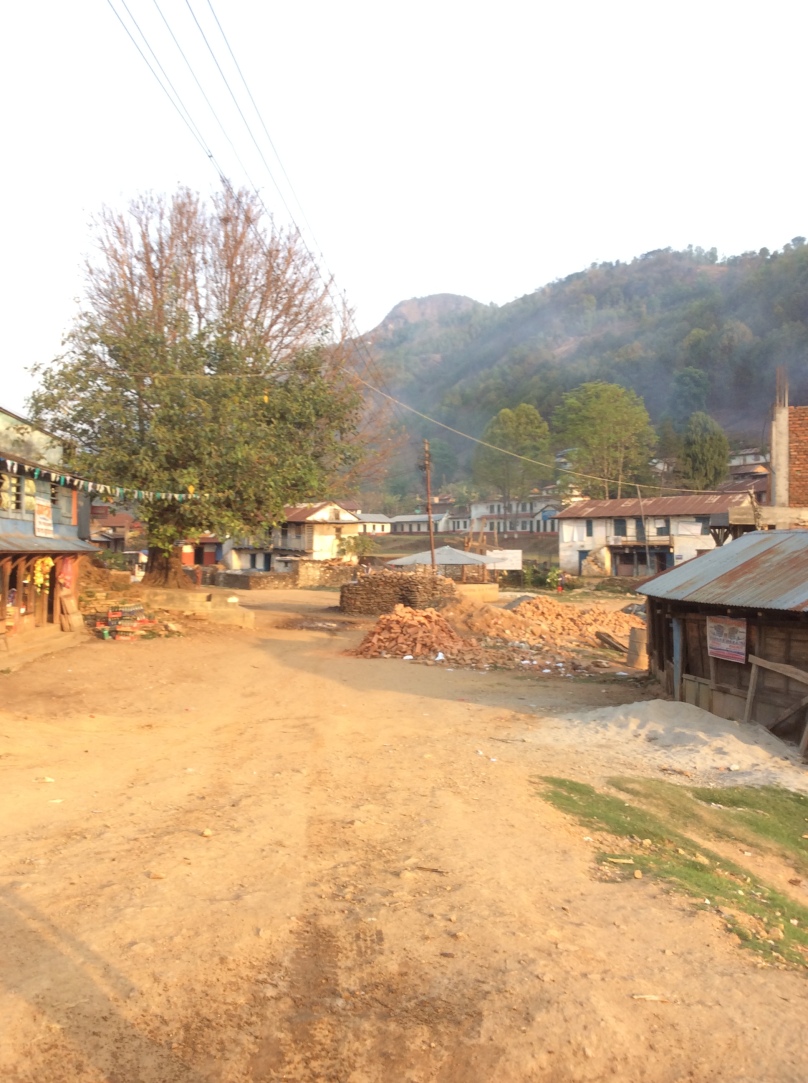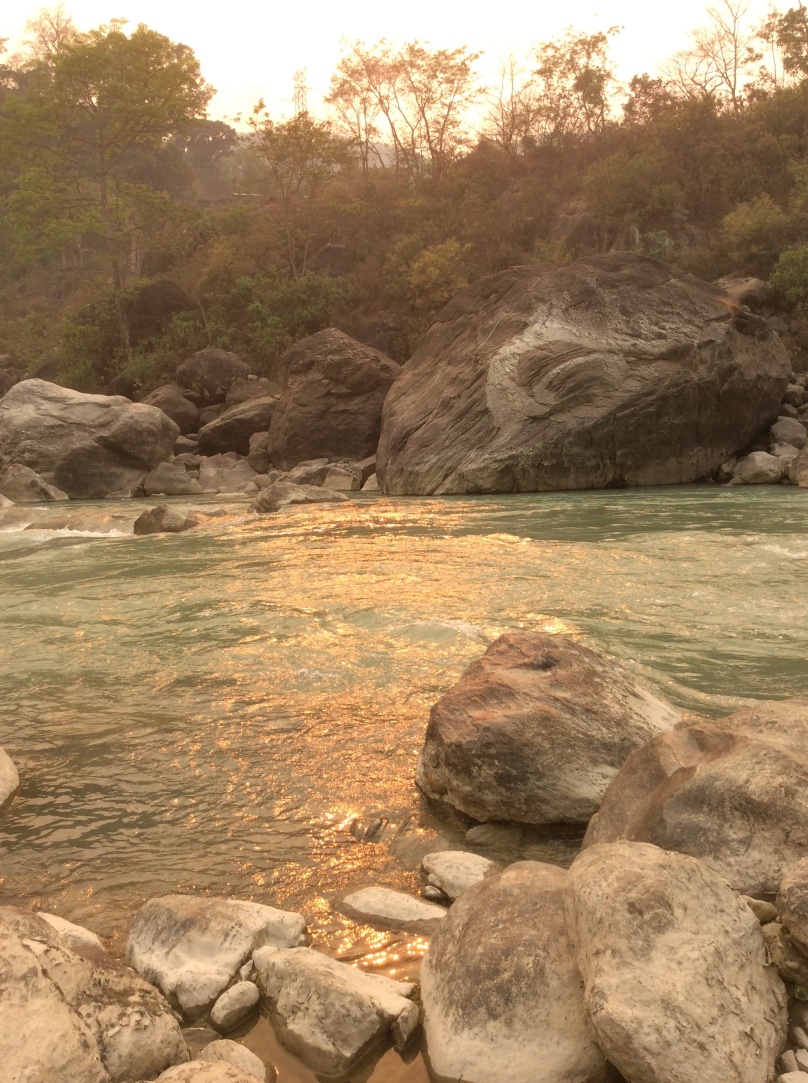Entering the gates of boudhanath takes people to an entirely different place of peaceful hymns, prayer flags, and trinkets shops, the central point of which is the famous Boudhanath stupa. Lopsang Lama, a Buddhist monk from the Kopen Gumba, shared with me the history of this stupa. Long ago there lived Chhajima, which literally translates to bird herder. She had three sons, and she wanted to make this stupa, so she went and asked the then reigning king for land. The king asked how much land she wanted, and she replied, not much, just as much as a single’s cow skin. After the king’s assent, she made a long thread out of the cow’s skin, and the area of boudhanath that we now see, is the area that she covered with the skin thread! The king was this way tricked. She lived to see the completion of the dome, but the remaining was completed by her sons and a buffalo. After completion, the elder son asked a wish to be able to be a king and spread Buddhism in Tibet, the next in line son asked to be able to teach Buddhism practices in his elder brother’s land, and the youngest s

on asked to be able to dispel of any obstacles that might come in the way. The buffalo was mad that he wasn’t mentioned in any wishes by any brothers despite his efforts in building the stupa! So he asked to be able to completely annihilate the religion that the brothers establish. His secret musings were heard by a crow perched nearby, which then went on and asked to be able to kill this buffalo with evil musings!
So a few generations went by, and then King Trisong Dhetsen established Buddhism in Tibet, Kamala Shila went teaching about the religion to the Tibetan people, and Padma Sambhava was there to dispel off the evil spirits that destroyed the attempts to build a Gumba. These three were infact the three brothers. Then Langtharma came along who destroyed the Buddhism establishment, but then he was also killed by the reincarnation of the crow.
So, the belief is that, whether the wishes made in Bouddhanath be good or evil, they come true! The boudhanath stupa is considered one of the most important landmarks for the Buddhist people.
The Buddhism religion is regarded as very peaceful religion, whose core is Lord Buddha, who attained enlightenment through meditation. The preaching are always about goodwill, service to all mankind, and peace in the world and within oneself. I went along and asked Monk Lopsang about the belief Buddhism holds for nature and its conservation.
Lord Buddha himself was born under a peeple tree, and gained enlightenment under the tree. This already connects the birth of the lord with nature. Nature is peaceful and calm, and so is the teaching of Buddha. Buddhism is about finding one’s true nature, and meditating within oneself, and this is most of the time done in secluded natural areas.
Also, Buddhist respect nature as the habitat of all living creatures. They don’t really take nature as some sentient being with heart and soul, but as a home to all the sentient beings there are. Their believe in non harm to any living creatures automatically coincides with nature conservation, as cutting down a single tree means affecting all the birds that nest there, all the squirrels that burrow, and all the other smaller organism, that call tree their home. Deforestation therefore means disregard of the living creatures, and is not supported by Buddhism.
Monk Lopsang also introduced me to their vows. After you decide to accept the teachings of Buddhism, you take certain vows, and they increase as you climb up the rank. These vows prevent them from doing any actions that are restricted, and many of these vows are also about refraining from causing harm to the nature. His vow prevents him from cutting trees, or even plucking a blooming flower or leaf! These rules are not as strictly imposed upon laymen, as they have to exploit nature for their livelihood, but sustainability is always encouraged, as Buddhism does not support extravagance. It is always about taking as much as we need.
Before Buddhism took over in Tibet the people practiced Bon religion. This religion had lots of Shaman and spirits. They revered different Gods and spirits, and most of them lived in the forests and mountains, therefore, the nature was also respected. Even after Buddhism was established, these practices remained. So although the Buddhism do not have Gods as a direct impersonication of nature, they have Gods who live in nature, and all the resources from that place is also not harmed. So, because of a forest spirit that is worshipped, the forest is also conserved, and because of a mountain God, the mountain is conserved.
Buddhism also strongly believes in Karma, what goes around comes around and you get what you deserve. There are many kinds of Karma, including individual and Collective Karma. So, the nature of any place is regarded as a collective Karma of all the people who live there. Good communities are rewarded with pleasant climate. Monk Lopsang points out the logic behind this, as conservation definitely helps the people with pleasant climate and sustainable resources, while destroying it definitely brings havoc in the form of natural disasters, arid land, and all other environmental problems.































